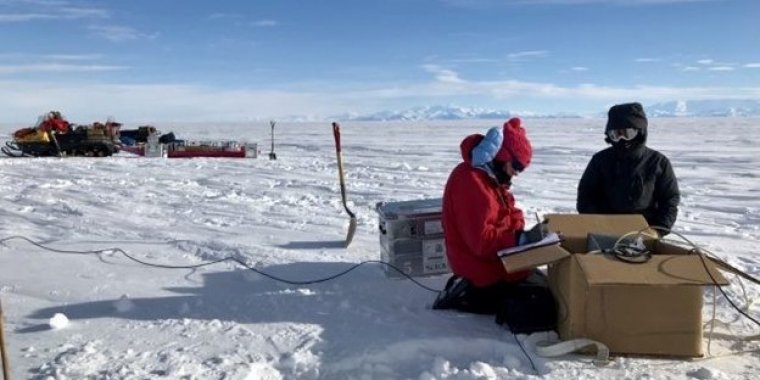| News / Science News |
Groundwater discovered in sediments buried deep under Antarctic ice
Scientists have made the first detection of groundwater beneath an Antarctic ice stream. The discovery confirms what researchers had suspected but had been unable to verify until now.

Researchers Chloe Gustafson, Meghan Seifert install instruments to measure groundwater in Antarctica. Photo: Kerry Key/LDEO
"It's been a hypothesis from our understanding of how the planet works that there's groundwater under Antarctica, but we haven't been able to measure it before," said study co-author Helen Amanda Fricker, a glaciologist at the Scripps Institution of Oceanography.
The researchers measured the groundwater by using a ground-based geophysical electromagnetic method called magnetotellurics. The method uses variations in Earth's electric and magnetic fields to measure subsurface resistivity.
The study was the first time the method had been used to search for groundwater beneath a glacial ice stream.
Researchers need data from all parts of the Antarctic ice sheet to understand how the system works and how it changes over time in response to climate.
The study provides a glimpse of a previously inaccessible and unexplored part of the Antarctic system and improves scientists' understanding of how it might affect sea level.
"Ice streams are important because they funnel about 90% of Antarctica's ice from the interior out to the margins," said Chloe Gustafson of Scripps Oceanography. Groundwater at the base of these ice streams can affect how they flow, potentially influencing how ice is transported off the Antarctic continent.
The team imaged only one ice stream, but there are many more in Antarctica. "There is probably groundwater beneath more Antarctic ice streams," Gustafson said.
A team of scientists from Scripps Oceanography and Columbia University's Lamont-Doherty Earth Observatory led the project. (National Science Foundation)





